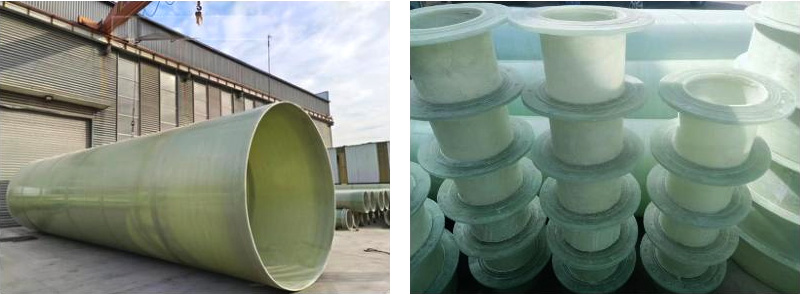Fiberglass Reinforced Plastic Pipes: A New Composite Pipe with Superior Performance and Wide Applications
Fiberglass reinforced plastic pipes (FRP pipes) are composite pipes made with glass fiber reinforcement and resin as the matrix, offering both lightweight and robust properties. Corrosion-resistant and easy to install, they have become a viable alternative to traditional metal pipes in construction projects and energy transmission systems. Below is an overview covering material characteristics, manufacturing standards, and market data.
Definition and Material Composition
The primary material system for FRP pipes adheres to stringent national standards:
The reinforcement layer uses alkali-free or medium-alkali untwisted glass fiber roving (GB/T 18369-2008), where fiber quantity directly impacts ring stiffness;
The resin matrix consists of unsaturated polyester resin (GB/T 8237) or epoxy resin (GB/T 13657). Food-grade resin (GB 13115) is mandatory for potable water pipes;
The sand-filled layer consists of quartz sand (SiO₂ purity >95%) or calcium carbonate (CaCO₃ purity >98%), with moisture content strictly controlled below 0.2% to ensure robust interlayer adhesion.
Forming Technology
Mainstream processes include fixed-length winding, centrifugal casting, and continuous winding. The winding process allows adjusting the strength ratio between axial and circumferential directions by designing fiber angles. The thickness of the sand-filled layer directly affects the pipe’s stiffness rating.
Connection Solutions
Prioritize socket-type O-ring seals (capable of accommodating ±10mm thermal deformation). For chemical applications, flange connections (PN10/PN16 pressure ratings) are recommended. Installation must strictly adhere to dual-hoist point operation specifications.
Typical Application Scenarios
Building Drainage: Large-diameter pipes (DN800+) can replace concrete pipes. With an internal roughness coefficient of just 0.0084, flow capacity exceeds HDPE pipes by 30%.
Power Ducts: Direct burial installation with ring stiffness ≥8 kN/m² eliminates the need for concrete encasement.
Chemical Conveyance: Acid and alkali resistance meets ASTM D543 standards, with a design life exceeding 50 years.
Agricultural Irrigation: Weighing only one-quarter of steel pipes, transportation and installation costs can be reduced by over 40%.
Industry Status and Trend Analysis
Market Size
The global FRP pipe market is projected to reach RMB 38.7 billion (approximately USD 5 billion) by 2025, growing to RMB 58 billion by 2032 (CAGR: 5.97%). Within segments, epoxy resin pipes in marine engineering applications exhibit a 7.2% growth rate.
Post time: Sep-26-2025






